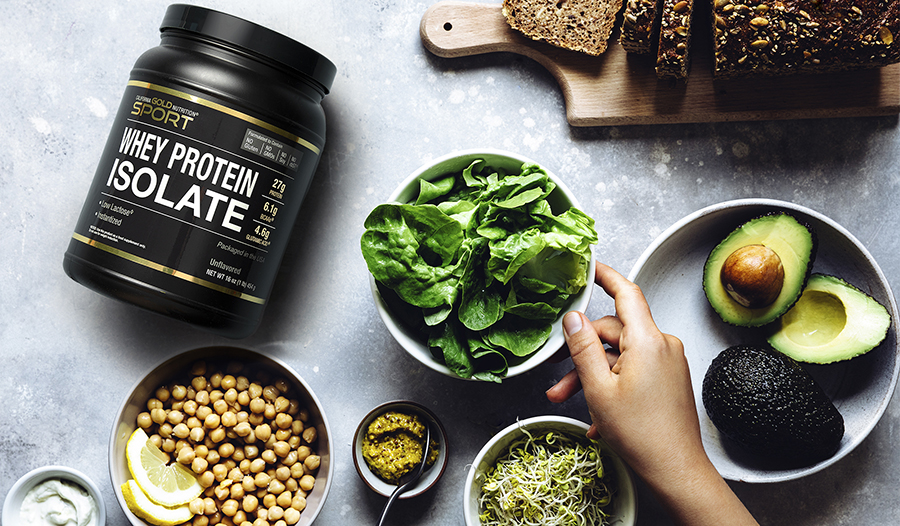How To Use Your Hand To Count Macronutrients + Other Nutrition Tips
DISCLAIMER:This blog does not intend to provide diagnosis...
- In this article:
- What Are Macronutrients?
- Benefits of Counting Macronutrients
- How to Use Your Hand to Measure Macronutrients
- Key Takeaways

There are countless ways to approach and dial into your nutrition-focused goals. Of the many ways, one of the most common and easy to understand is using your hand to count macronutrients. Whether your goal is to improve your performance in the gym, enhance your body composition, or simply learn more about your eating habits, your hand is a fantastic place to start.
The best part about using your hand to measure macronutrients is that it takes relatively no effort to do and even a true beginner can learn from this method. Essentially, with this method of macronutrient counting, you use your hand to help measure how much of certain macronutrients you’re consuming. This can be useful for those wanting to learn more about hitting their macronutrient goals without spending time tracking through apps and other means.
In this article, we’re going to discuss the benefits of counting macronutrients, how to use your hand to do it, and other tips to help you along the way.
What Are Macronutrients?
Before diving into how to measure macronutrients with your hands, it’s a good idea to first understand what macronutrients are. Macronutrients are nutrients that we use in large amounts. The three macronutrients that we’ll use our hands to measure include fats, carbohydrates, and protein. Every macronutrient includes a number of calories, so using your hand to estimate macronutrient intake can also be a useful tool for helping to provide a rough idea of how many calories you’re consuming.
- 1g of fat = 9 calories
- 1g of carb = 4 calories
- 1g of protein = 4 Calories
Now, it’s important to understand that certain types of foods will have different breakdowns of macronutrients which will then shift how many calories some foods have. For example, just because we use our palm to measure our protein intake for something like chicken this doesn’t mean the caloric intake will be the exact same for a fatty steak. So while the protein may be similar, the caloric intake may be different. Basically, the hand can be a useful tool to gauge calories in addition to macronutrients, but it’s not an exact foolproof tool for being as accurate as possible.
Benefits of Counting Macronutrients
There are countless benefits of counting macronutrients when discussing in the context of the grand scheme of your nutritional strategy. The benefits that can come along with macronutrient counting will ebb and flow based on the context of your lifestyle and needs. In layman’s terms, the benefits in relation to one’s goals for paying attention to macronutrients may be different for a bodybuilder compared to a soccer mom that is simply trying to eat with a bit more strategy. That being said, there are countless benefits of counting macronutrients or at least keeping an eye on your intake.
1. Ensures Consistent “Estimated” Protein Intake
Consuming adequate protein on a daily basis is incredibly important for every individual—even those that are not necessarily self-proclaimed gym rats or fitness enthusiasts. Protein helps the body repair and rebuild, and as we age our protein intake gets increasingly more important regardless of our fitness levels and expertise. There are a multitude of benefits to consuming adequate protein and a majority of these relate to how our body performs on a daily basis and how much lean muscle mass we hold and carry every day.
Our hand can be a fantastic tool for helping consume adequate amounts of protein. For example, if we know a particular hand measurement contains a certain amount of protein, then we can easily aim to consume “X” hands of protein every day. It takes the extra leg work out of tracking and simplifies the process of understanding our intakes.
2. Easy for Beginners
Another benefit of using your hand to measure macronutrients is that it’s incredibly easy to do and everyone can do it. Measuring and counting macronutrients and calories can be a bit complicated for beginners to learn, so using your hand can be a nice tool to help you ease into the process of keeping a loose eye on your nutritional intake.
Using your hand is not going to provide the same accuracy as other means of counting, but the hand can provide you with a nice base idea and help you also consume more fruit and vegetables because you can also use your hand to count produce intake, which we’ll discuss below as well.
3. Can Do It Anywhere
Another pro to using your hand to measure macronutrients is that you can do it anywhere. For example, let’s say you’re out to dinner and don’t feel like pulling out your phone to track calories and macronutrients. Instead, you can easily mentally use your hand to get an estimate for how much you’re consuming. This is useful for anyone that likes to have a loose idea and that is constantly changing environments where they may not be able to accurately track how much you’re consuming.
How to Use Your Hand to Measure Macronutrients
To use your hand to gauge macronutrient and food intake, we’re going to focus on tracking with the thumb, a cupped palm, an opened palm, and a fist.
1. Use Your Thumb to Track Fat
When consuming foods that are predominantly fat-based, you can use your thumb to gauge how much fat you’re consuming. Foods that would fall into this category include avocado, butter, coconut oil, and nuts.
- 1 thumb = 10-20g of fat
Remember, the fat amount can vary slightly based on what you’re consuming, so that’s why the hand is a useful way to loosely track, but it’s not perfectly accurate. Typically, men will want to consume 1-2 thumbs of fat per meal while women will want to consume 1 thumb of fat per meal. This amount can vary per one’s goals.
2. Use Your Open Palm to Track Protein
For protein, you’re going to use your open palm to gauge how many macronutrients you’re consuming. This could include things like turkey breast, grilled chicken, lean steak, Greek yogurts, and seafood.
- 1 open palm = 20-30g of protein
Depending on your goals, men will generally find consuming 1-2 palms of protein per meal suffices for their goals while women will generally aim to consume 1 palm of protein.
3. Use Your Cupped Palm for Carbohydrates
Cup your palm. The amount of space in your cupped palm will be how you gauge your carb intake. Common carb sources could include oatmeal, rice, quinoa, and potatoes.
- 1 cupped palm = 20-35g of carbs
Again, depending on your goals, men will generally consume around 2 cupped palms of carbs per meal while women will shoot for 1-2 cupped palms.
4. Use Your Fist to Track Vegetables
Yes, vegetables are not a macronutrient per se, but they can still be really useful to track due to their micronutrient and fiber content which is why it’s also a good idea to keep an eye on your daily intake. Vegetables in this case could be broccoli, cauliflower, kale, spinach, and carrots.
- 1 fist = 1 serving of vegetables
Men and women will usually want to consume 1-2 fists of vegetables per meal, and this is a good estimate for ensuring you’re getting enough micronutrients and fiber (depending on the vegetables you eat) on a daily basis.
Key Takeaways
Using your hand to track macronutrients can be an easy and low-hanging fruit way to keep an eye on your daily intake. It’s not going to be as accurate as using an app or a service, but it’s a nice way to start gauging how much exactly you may be consuming on a daily basis.

 By Jake Boly, CSCS
By Jake Boly, CSCS


